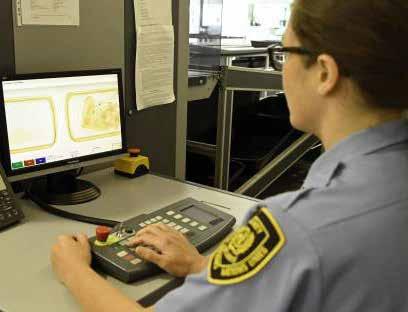
3 minute read
Assessing the impacts of climate change and pollution on marine life with nuclear science in Kuwait
By Rakelle Arab and Michael Amdi Madsen
Among the aromatic spices and imported fruit, seafood, such as sea bream, grouper and mullet, is on display at Souk Sharq marketplace. Here, in the heart of Kuwait City, freshly caught fish from the Arabian Gulf has been sold for decades. Like all wet markets, this timeless buyers’ and sellers’ paradise must deal with the ever-present risk of food contamination. As climate change worsens, concerns have grown about warmer, more acidic waters affecting the growth and health of fish, as well as the way pollutants affect food webs and impact seafood safety. Nuclear methods are a unique tool that researchers can use to find out if these concerns are justified.
Saif Uddin from the Kuwait Institute for Scientific Research (KISR) is one such researcher. His institute has teamed up with the IAEA to study the effects of greenhouse gas emissions and climate change — such as ocean acidification and warming waters — on marine life using nuclear techniques.
“It’s known and understood that climate change impacts marine life, but it’s not exactly clear to what extent,” said Uddin. “Studying the way certain isotopes are absorbed in animals can give us answers and help authorities better plan how to tackle potential issues.” Isotopes of a chemical element can be identified by the number of protons they have. By measuring the ratios of various isotopes of an element in a sample, researchers can study how chemicals and compounds are absorbed by an organism.
With IAEA support, KISR is developing methodologies and establishing techniques for undertaking experiments studying isotopes of copper, mercury and polonium. These metals are of public concern, as they can have serious health effects when they accumulate in high concentrations in the environment and seafood. By studying the metals’ isotopes and assimilation rates in the different tissues of marine organisms, KISR experts can trace the origin of these chemicals and so determine the specific cause of contamination. They can also assess how these contaminants move through coastal and marine ecosystems under changing climatic and environmental conditions.
“There are concerns that warmer and more acidic waters might cause marine life to absorb more pollutants, and that they could accumulate in seafood. We used nuclear techniques to find out,” said Uddin. Using radiotracers, he found that ocean acidification did not affect polonium uptake in copepods — a subclass of microscopic crustaceans important to the ocean’s food web — but said that it could impact the uptake of other metals: “We think ocean acidification could affect the uptake of lead and zinc, as zinc is used in the growth of organisms, but for all other metals we have not seen a noticeable increase in uptake.”
Understanding the impact of climate on marine life
Beyond the study of marine pollutants, Uddin said that nuclear techniques also play a key role in our ability to better understand how climate change directly affects growth in marine organisms. In a different study on copepods, Uddin increased the water’s acidity and temperature over the course of a year. Uddin found that the copepods were able to adapt to the changing conditions over 14 generations.
In another study, Uddin raised shrimp in increasingly acidic water conditions, similar to those modelled in advanced climate change scenarios. A radiotracer, calcium-45, helped to determine how ocean acidification affects the transparency of shrimp’s exoskeletons, an indicator of their health. Uddin found that, while the size of the shrimp did not change between generations, the shrimp were less efficient and consumed twice as much food in order to reach their regular weight.
“What we’re seeing is not all doom and gloom for marine life if the effects of climate change come over a long enough period of time. In our studies we see copepods and shrimp adapt to climate change across generations,” Uddin said.
Collaborating for the ocean
Uddin’s climate change studies started in 2020, but the IAEA has been working closely with KISR for more than ten years. With its expertise in using nuclear techniques to study the environment, the institute is a leading regional research hub and has been designated an IAEA Collaborating Centre for the use of nuclear and isotopic techniques to advance coastal and marine science. More joint projects between KISR and the IAEA are being planned, with a particular focus on collaboration with other countries in the region, and studies exploring the impact of plastic pollution on marine life.
“The warm waters of the Gulf provide one of the most interesting test beds for what is to come in the years ahead as climate change advances,” said Marc Metian, a research scientist at the IAEA Marine Environment Laboratories in Monaco. He supports Uddin in coordinating the Collaborating Centre’s activities and raising awareness of its findings among other researchers and scientific bodies around the world. “In its region, KISR is a leader in the use of nuclear and isotopic tools for marine research, and globally its findings can help to inform decision makers about how marine life will adapt to warming waters and ocean acidification,” Metian said.
As a Collaborating Centre, and through the IAEA’s technical cooperation programme, KISR is working to support neighbouring Gulf countries in improving their understanding of marine ecological responses to climate change. The Collaborating Centre is also part of the IAEA’s interregional network for collecting high quality ocean acidification data, which is used to support the development of climate change adaptation and mitigation strategies.
Copepods are a subclass of microscopic crustaceans important to the ocean’s food web.






